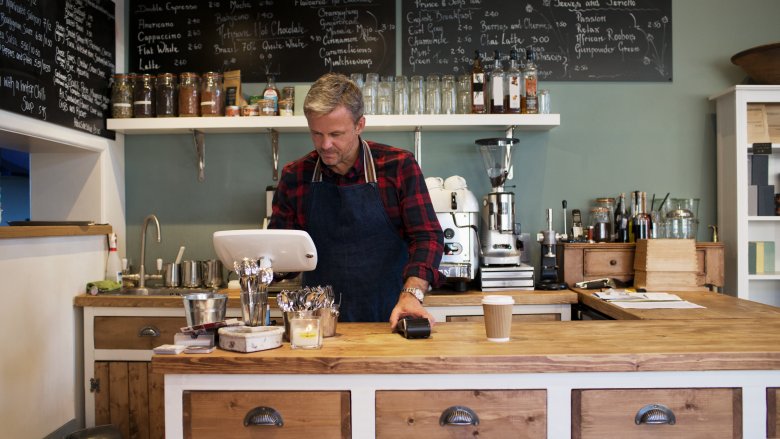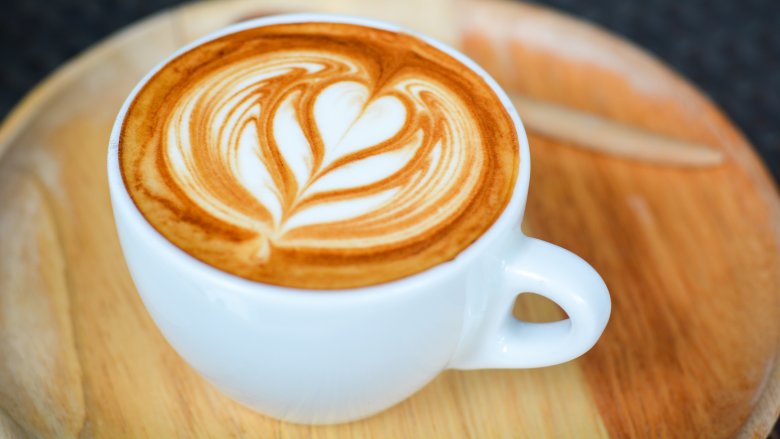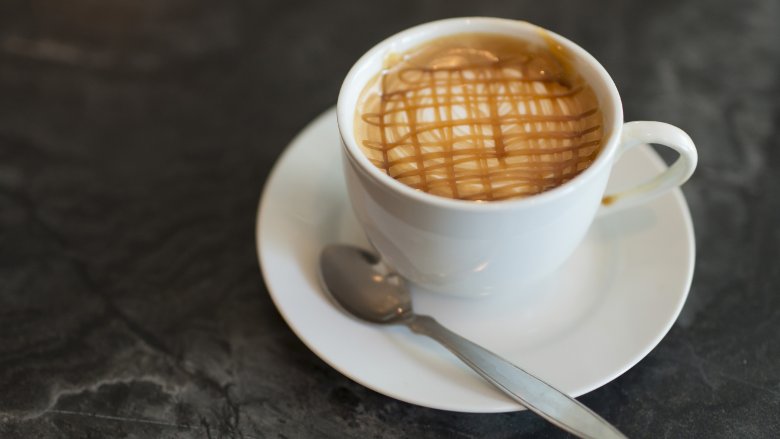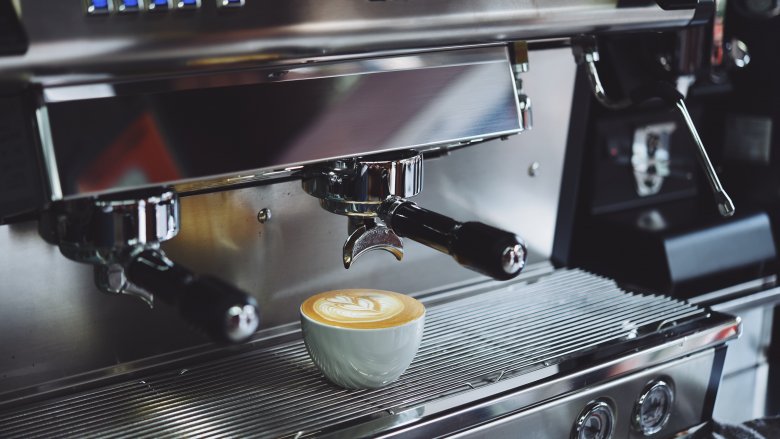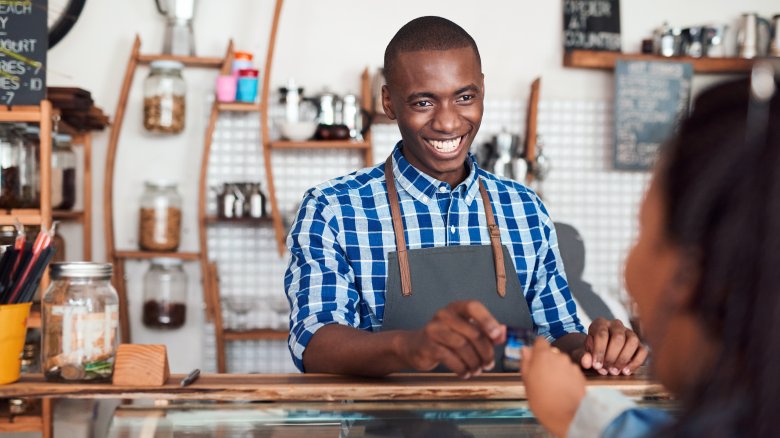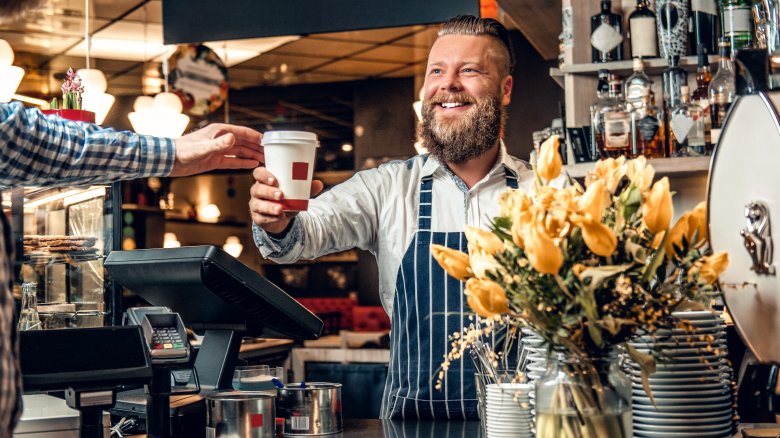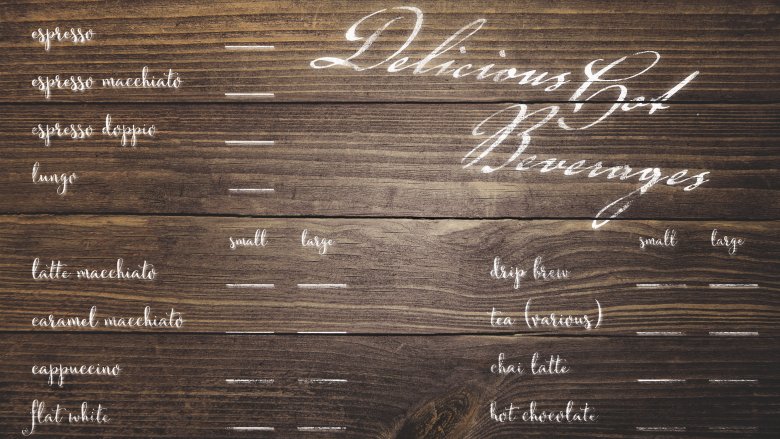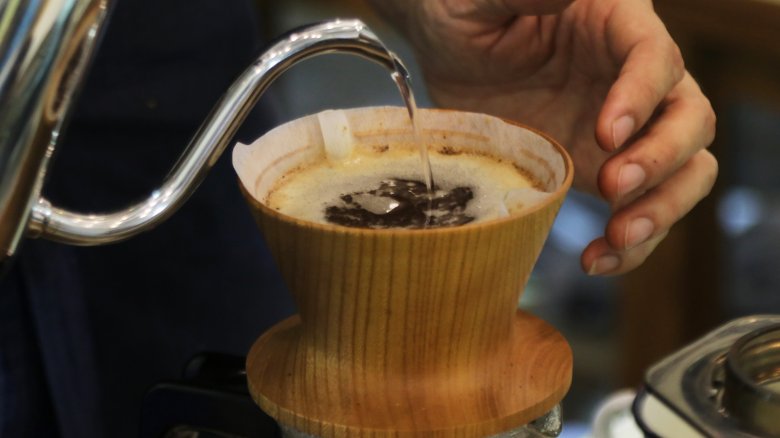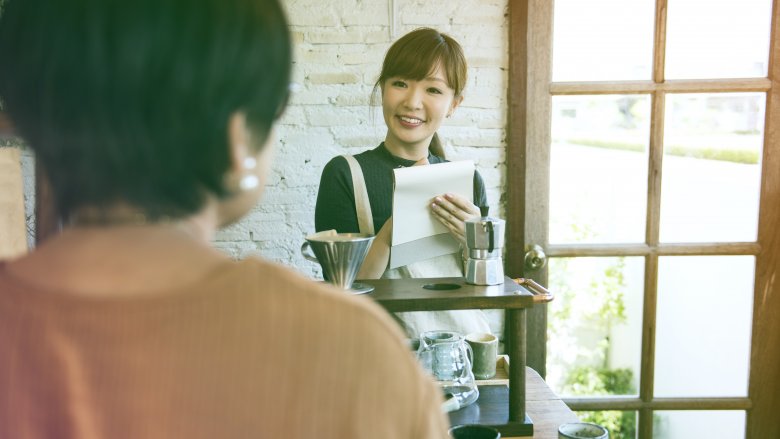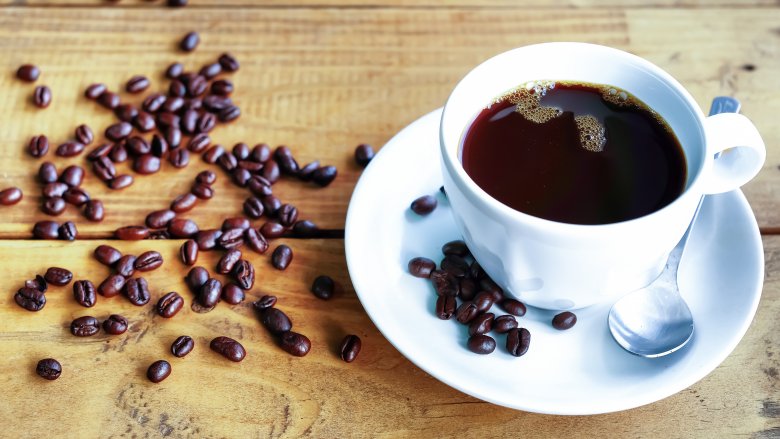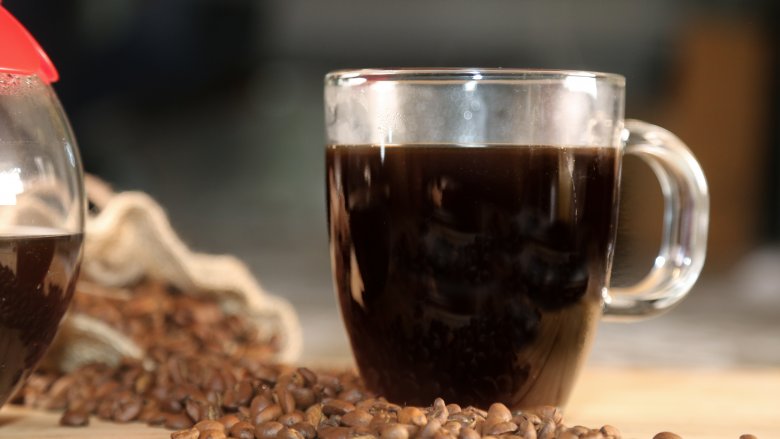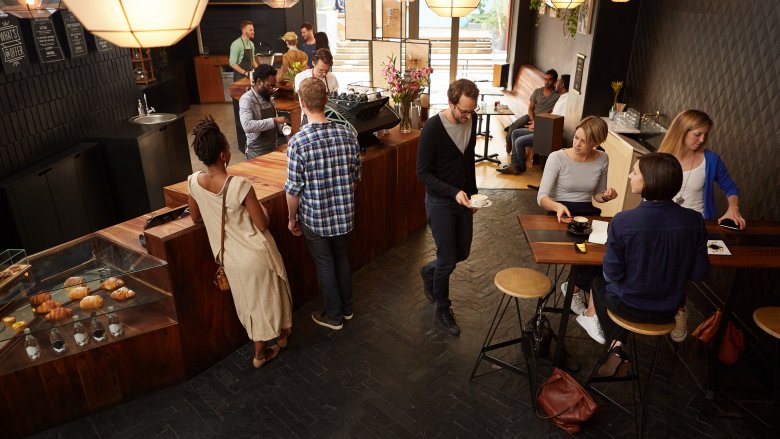Things Your Barista Wishes You Knew
How often do you go to your local coffee shop to grab a latte or Americano on the way to work? You probably see your neighborhood barista a few times a week, but have you ever wondered what they're thinking? I went to some of the best baristas around to find out what they wish we coffee lovers knew when we step inside their coffee shops.
Latte art takes time to master
I'm a latte art nerd. Every time I get a flower or heart in my latte, I snap a picture of it. But while latte art is really cool, it also takes time for baristas to learn how to do it.
Allison Burkard, the retail district manager for Caffè Umbria in Chicago told me, "Just like with a painter or sketch artist, honing the art of making designs in coffee from steamed milk takes time... lots of time, and many hours of practice."
Burkard shared the complex parts that go into latte art: "This skill has two major components. The first is steaming milk, with the correct consistently and aeration, and correct temperature. This skill within itself takes a while to master."
She continued, "Once you have that perfect milk, only then can you then learn to pour it over that perfectly made espresso in an artistic way, creating a design. The whole process works like building blocks, you can't have one without the other. So don't secretly judge your barista if they don't pour some crazy elaborate design in your cup... chances are they are still working on it!"
Don't order a caramel macchiato if you're not at Starbucks
Don't make the mistake of thinking every coffee shop makes the same drinks or uses the same lingo as Starbucks. In fact, if you order a caramel macchiato outside of Starbucks, you may not get the drink you want.
Analise Lasky, head barista of Spill the Beans in San Diego told me, "Customers should be aware that a caramel macchiato is not a real macchiato, it's a latte. Customers constantly ask for a macchiato and are expecting a caramel macchiato, but get served a traditional macchiato which is espresso with a little foam."
Instead of ordering your favorite Starbucks drink, check out the menu or ask your barista what their specialty drinks are. You might find a coffee drink you like even better.
The perfect espresso isn't easy
If your barista is good, they probably make it seem simple to deliver a perfect espresso shot to you. But it's actually not as easy as it looks.
Burkard told me, "Pulling an espresso shot is not an easy feat. There are many ways in which outside factors influence the pulling of the shot."
For example, she added, "The grind of the coffee cannot be too fine or too coarse and affects how the water flows through the coffee when pulling the shot. If it's too fine, the water flows through slowly, creating a thick mouthfeel and bitter flavor. If the grind is too coarse, the water flows through too quickly, making the espresso shot watered down."
In addition to the coarseness of the coffee grind, she continued, "Outside factors like heat, humidity, dry air, and cold also affect the grind. As a barista, it is your responsibility to ensure that the grind adjustments are made throughout the day so that it stays just right."
Politeness is really appreciated
Instead of getting impatient with your barista, go the extra mile and be polite and friendly instead. Pat Mills, former manager of a Third Wave coffee shop for a number of years and owner of Making Nice Coffee told me, "Coffee shops are busy places. Hundreds of people come in per day to pick up a coffee then run out to their high powered business meeting or wherever. As such, it can feel like working on a factory line processing all those coffee orders."
She added, "This is why it's so nice to get a smile or a 'how are you?' every once in awhile. You people are absolute stars and we never have the time to tell you!"
Lasky added, "Please put your phone down when you are ordering. Eye contact and personal engagement goes a long way and seems to be a lost art these days. 'Liking' that Instagram photo can wait while you place your order."
Making the best coffee sometimes means saying no to your requests
If you're not a savvy coffee drinker, you may think it's okay to reheat coffee in the microwave or to just pour a hot drink over ice. But baristas who take their work seriously know better, and that means they might say no to you on occasion.
Burkard told me, "For most baristas, coffee is our life! We drink, sleep, and breathe this beautiful little bean. We don't like to take shortcuts."
She went on, "What does this mean exactly? Well, we want to make sure the integrity of the coffee rings through every cup, regardless of your personal preference. We don't like to reheat hot beverages, we remake them."
In addition, Burkard said, "We never pour a hot beverage over ice, and there is never a correct way to make an iced cappuccino. Requests like this hurt the way our coffee tastes and inevitably hurt our hearts. We don't say no to these things because we don't want to provide our customers with amazing service, we avoid doing these things to save your taste buds."
There are many different coffee languages
Have you noticed that a medium coffee at your locally owned coffee shop is the same as a grande at the Starbucks down the street? There are different ways of describing coffee, and when you order, you may not do it in the language of the coffee shop you're visiting. When that happens, your barista might ask you a bunch of questions to clarify.
Burkard told me, "In the coffee world, every brand, shop, or cafe has their own twist in the way the coffee is prepared or sized. Although there is a certified standard for things, all of this is interpreted in different ways."
She continued, "A barista may ask probing questions to find exactly what it is the customer is looking for. It's not that they're questioning you as the customer, but they're trying to analyze the ten thousand coffee languages out there to ensure you get your beverage served exactly as you would like it.'
Making your coffee is a fine art
You may be familiar with espresso and drip coffee, but did you know that there are lots of other ways to brew the perfect cup of coffee? Baristas like to experiment with different methods of making coffee so that they can give you the best cup of coffee possible.
Burkard told me in our interview, "We know we look like mad scientists, and we like it! There are many types of alternative brewing methods for coffee. Some are a bit more traditional, like a French press or Moka pot. Some are more uncommon, like an Yama tower or vacuum siphon."
She added, "For a barista, having a customer who comes in and is interested in the process is a very exciting experience. We get to put on our figurative lab coats and experiment with the brewing methods. All of these methods prepared with different coffees will bring out different flavors from those coffees. This is a way for a barista to customize a cup of coffee providing an experience for a customer, along with having a lot of fun."
You're allowed to ask questions
Don't be afraid to talk to your barista and ask questions. They love it when customers show an interest in coffee, and believe it or not, they want to answer your questions.
Mills told me, "A lot of coffee shops can be a bit intimidating with all the massive lists of roasts, beans, drinks, etc. If the place is good, then the baristas will be well trained and knowledgeable and believe me, there's nothing knowledgeable baristas love to do more than to bore you to death (sorry, inform you) about the latest coffee beans they've got."
The next time you feel intimidated by all the options at your coffee shop, take it as an opportunity to educate yourself and geek out with your barista.
You don't need all that sugar and milk
If you're like me, you order your milk with a dash of coffee. But some baristas wish that people would just leave their coffee alone so they can taste the quality of the beans themselves.
Mills told me, "When you buy good espresso with freshly roasted top quality beans, you want to taste it. An Americano is good or a macchiato. You could even go crazy and order espresso by itself!"
You could also order the espresso by itself, taste it, and then add cream or milk after the fact.
Dark coffee roasts aren't always good
Do you order dark coffee roasts because you want a stronger cup of coffee? If so, you should know that darker doesn't always mean better.
A representative from Bird Rock Coffee Roasters told me, "When a skilled roaster is roasting their coffee, they want to caramelize the sugars in the coffee while preserving the unique flavors of that coffee. This is done skillfully usually through light and medium roasts."
They went on, "If you are roasting the coffee dark, it is usually because the coffee was not good to begin with; the origination of dark roasts was to cover defects in the green coffee."
In fact, dark coffee was born because of mold. Ick. The rep added, "When the specialty coffee industry was new, there was too much inventory, and coffee was not stored correctly, so mold and other adulterations affected the taste and for lack of a better word, needed to be burned off in a dark roast."
When we're busy, things take longer
Before you start getting impatient with your barista, realize that they're working as fast as they can to make you the perfect coffee drink.
Jim Munson, CEO of Brooklyn Roasting Company, told me, "We wish our customers knew that during busy times things might take longer. We want to make you happy, not frustrated. We want to make your taste buds happy and that takes time, especially with the more complicated drinks."
